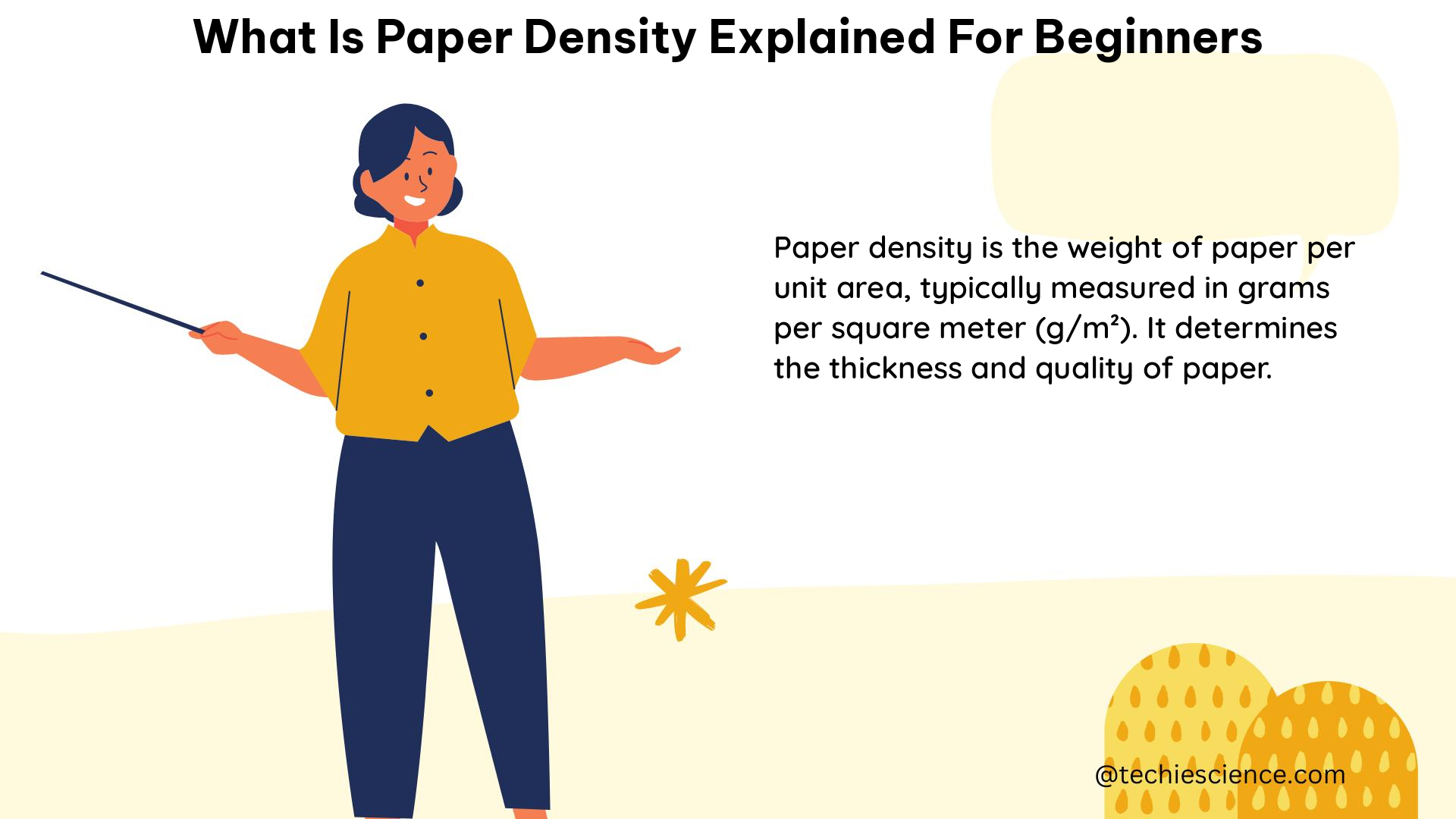Paper density is a crucial concept for anyone working with paper, whether it’s for printing, writing, or any other application. It refers to the weight and thickness of a sheet of paper, which can have a significant impact on the overall quality and performance of the final product. In this comprehensive guide, we’ll delve into the intricacies of paper density, providing a detailed explanation for beginners.
Understanding Paper Density
Paper density is typically measured in grams per square meter (gsm) or pounds per ream (where a ream is a standard quantity of 500 sheets). The higher the gsm or pounds per ream, the denser and thicker the paper. This measurement is essential in determining the appropriate paper for a specific task, as it can affect the appearance, feel, and even the printing quality of a document.
Physics Formula for Paper Density
The density of paper can be calculated using the formula:
Density = Mass / Volume
In the context of paper, the mass refers to the weight of the paper (in grams or pounds), and the volume refers to the area of the paper (in square meters or square feet).
Physics Example
For example, if you have a sheet of paper that weighs 80 grams and measures 1 square meter, the density of the paper would be:
Density = 80 grams / 1 square meter = 80 gsm
Physics Numerical Problem
Let’s consider a more complex scenario. If you have a ream of paper that weighs 5 pounds and contains 500 sheets, what is the density of the paper in pounds per ream?
To solve this problem, we’ll follow these steps:
- Calculate the weight per sheet:
Weight per sheet = 5 pounds / 500 sheets = 0.01 pounds per sheet - Calculate the total weight of the ream:
Total weight of the ream = 0.01 pounds per sheet × 500 sheets = 5 pounds - Calculate the density of the paper in pounds per ream:
Density = Total weight of the ream / Area of the ream
Density = 5 pounds / 500 square feet ≈ 0.01 pounds per square foot
Common Paper Densities

To provide a better understanding of paper density, let’s look at some common examples:
| Paper Type | Density (gsm) | Density (lbs per ream) |
|---|---|---|
| Standard Copy Paper | 80-90 gsm | 20-24 lbs |
| Cardstock | 160-250 gsm | 65-110 lbs |
| Newsprint | 45-52 gsm | 12-14 lbs |
| Tissue Paper | 15-25 gsm | 6-8 lbs |
Effects of Paper Density
The density of paper can have a significant impact on various aspects of its use, including:
Printing Quality
When printing documents, using paper with a higher density can result in better ink absorption and sharper text and image quality. The increased thickness and weight of the paper can also prevent show-through, where the content on one side of the page is visible on the other side.
Environmental Impact
Using paper with a lower density can help reduce the environmental impact of paper production and waste. Lighter weight paper requires fewer resources to manufacture and transport, and it generates less waste when disposed of.
Appearance and Feel
The density of paper can also affect the overall appearance and feel of a document. Heavier, denser paper can give a document a more professional and high-quality appearance, while thinner, lighter paper may be more appropriate for everyday use or drafts.
Factors Affecting Paper Density
Several factors can influence the density of paper, including:
-
Fiber Composition: The type and amount of fibers used in the paper-making process can affect the density. Papers with a higher percentage of long, strong fibers tend to be denser.
-
Calendering Process: The calendering process, which involves passing the paper through a series of rollers, can compress the paper and increase its density.
-
Coating and Finishing: Applying coatings or finishes to the paper can also impact its density, as these treatments can add weight and thickness to the paper.
-
Moisture Content: The moisture content of the paper can affect its weight and, consequently, its density. Papers with higher moisture content will generally be denser.
Practical Applications of Paper Density
Understanding paper density is crucial in a variety of applications, including:
-
Printing and Publishing: Selecting the appropriate paper density is essential for achieving the desired print quality, appearance, and feel of printed materials.
-
Packaging and Labeling: The density of the paper used for packaging and labeling can affect the durability, strength, and overall presentation of the final product.
-
Stationery and Office Supplies: The density of paper used for stationery, such as letterhead, envelopes, and business cards, can contribute to the professional image and quality of the materials.
-
Artistic and Creative Applications: Artists and designers may choose paper with specific densities to achieve particular visual and tactile effects in their work.
-
Archiving and Document Storage: The density of paper can impact its longevity and resistance to damage, making it an important consideration for archiving and document storage.
By understanding the principles of paper density, beginners can make informed decisions when selecting the right paper for their specific needs, ensuring optimal performance, quality, and environmental sustainability.
Reference:
- PaperSpecs – Paper Weight and Thickness
- The Balance Small Business – Paper Weights and Thicknesses
- Office Depot – Hammermill Paper, 20 lb, Letter Size

The lambdageeks.com Core SME Team is a group of experienced subject matter experts from diverse scientific and technical fields including Physics, Chemistry, Technology,Electronics & Electrical Engineering, Automotive, Mechanical Engineering. Our team collaborates to create high-quality, well-researched articles on a wide range of science and technology topics for the lambdageeks.com website.
All Our Senior SME are having more than 7 Years of experience in the respective fields . They are either Working Industry Professionals or assocaited With different Universities. Refer Our Authors Page to get to know About our Core SMEs.